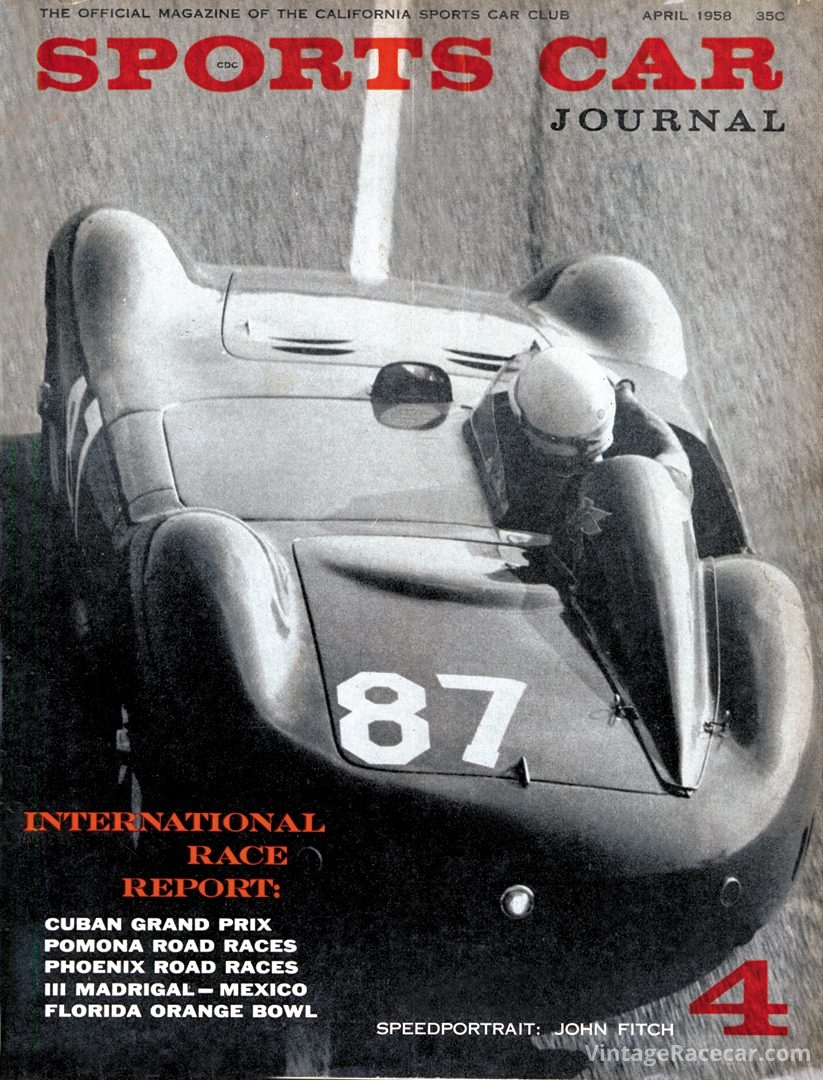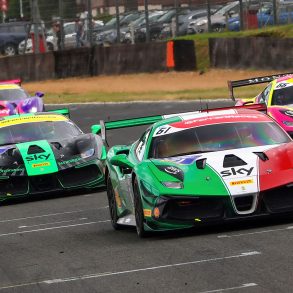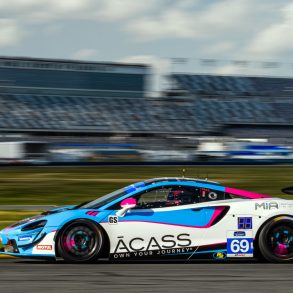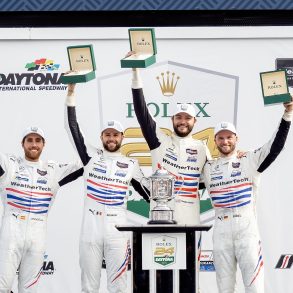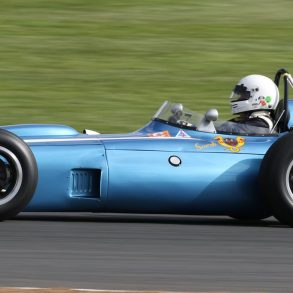The immutable rule of life is that every living thing is born, lives and dies. Publications are living things, and as such, they don’t live forever. Remember Look magazine? During the ’50s, there were four metropolitan daily newspapers in Los Angeles; now there is one. When the sports car craze burst onto the scene, a number of periodicals were born. Few still survive today.

There was one that I had something to do with, so I feel justified in preserving its history. It was called the Sports Car Journal, initially the West Coast Sports Car Journal. Its birth was, perhaps, unique.
In 1954, I was pursuing a college education on the GI Bill at Los Angeles State College (now California State University at Los Angeles). At that time, it offered only the junior, senior and graduate years. It shared a campus with Los Angeles City College, which offered freshman and sophomore years. I majored in political science with a goal of going to law school after graduation. That year I traded in my Buick for a used XK120. The Jaguar changed my life forever.
I had become acquainted with a classmate, Dick Sherwin, who was enrolled in the same classes with the same goal: becoming a lawyer. Dick had an MGTD. With a few like-minded others, we started the “Los Angeles State College Sports Car Club.” This was not unusual in those days. Many colleges and large companies had similar clubs. Our first activity was to stage a concours d’elegance on the campus. I recruited Ernie McAfee, Ed Ness and Alan LeMay as judges. Marion (“MG Mitten”) and Charlie Weber entered their Bertone MG and we became friends. Marion and Charlie both lived into their nineties. I eulogized Charlie at his service a year or so ago. But that’s another story.
Required to have an academic minor, Dick and I decided on journalism and enrolled in a class together. We discovered that we could earn two extra units if we performed a related activity outside of class. In a moment of some mental instability, we decided to create a monthly “sports car magazine.” Here’s how: Dick’s father, Al, had a retail trophy business serving mainly the horsey set that indulged in showing, jumping, gymkhanas and the like. In addition, he was sometimes an announcer at equestrian events. In conjunction, Dick’s mother, Ettienne, published a newsletter. So the expertise and equipment to produce a periodical was at hand.
Actually, we had an ulterior motive. After the first few sports car races, someone, probably connected with the lumber business, suggested it would be a good idea to herd spectators into hopefully safe areas, keeping them behind snow-fencing. Overnight, press passes that allowed the wearer to roam at will became highly desirable. Even more so were photographer passes with which one could stand in the most dangerous spots. And the passes were free! With a sports car magazine, we qualified for passes, Dick with a press pass, me with a photographer’s.
We divided the labor. Dick did the layout while I took pictures and sold ads. We both wrote articles. In those days, before computers, type was set by a machine called a linotype, which produced the copy in lead. But we couldn’t afford this. Ettienne used a thing called a “varityper” for her newsletter. To set type, you first set the width of your column. Next you type a line to fill the space. Finally, you re-type the column and—lo and behold—the machine justifies the line. When the story or article is finished and printed on paper, it was “pasted up.” The keyboard was laid out like a typewriter, but keying required very strong pecks. And everything had to be typed twice. I hope to never again be subjected to this torture.
The semester we started the magazine was in the spring of 1955. The first edition was February of that year. Dick designed the logo for the cover and I took the photograph. The car was an Austin-Healey owned by one of the club members who had modified its nose to resemble a Ferrari’s. The “cover girl” was the college’s dean of women. A recent graduate, she was a very attractive woman in her early twenties. I’m not sure how such a young person got the job. Her husband was soldiering in Korea, so as a veteran, I restrained myself from making a pass.
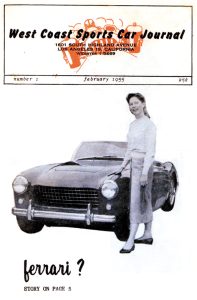
From then on, Dick more or less took over. Somehow or another he was able to eke out a living from it. I helped as much as time would allow, but I never wanted to make it a career. Beginning with the November 1956 edition, it became “The Official Magazine of the California Sports Car Club.” Each member was mailed a copy and there was an insert with club news. The “West Coast” was deleted from its name.
Regardless of the revised title, Southern California coverage was emphasized. The lead story in that November issue was a report I wrote about the October races at Pomona. It was also noted that child-actor Tim Considine had joined the Cal Club. The Austin-Healey 100-6 was previewed, the AC Ace was tested and an up-and-coming local driver—Phil Hill—was profiled.
In October of 1955, another publication—MotoRacing—was started by a former newspaper fellow named Gus Vignole. Perhaps because he was at one time denied a press pass, Vignole hated the Cal Club, and particularly, the volunteers who ran it. Three-time president, Ken Miles, came in for more than his share of yellow journalism. Ken—almost as good a writer as a driver—also became a regular contributor to the Sports Car Journal. One of the famous feuds of the time consisted of the two periodicals sniping at one another.
After a year of virtual nonstop study and having my eyesight deteriorate from 20/20 to 20/200, I decided the law was not for me. (Did you ever wonder why all lawyers wear glasses?) I got involved with another enthusiast, OCee Ritch, in a PR and advertising agency. We acquired the Los Angeles Region of the SCCA as a client and took over publishing its newsletter. The L.A. Region and the Cal Club were bitter rivals at the time. (In the early ’60s, the L.A. Region was disbanded and the Cal Club became the California Sports Car Club Region of the SCCA. But that’s yet another story.)
As a consequence, my participation in the Sports Car Journal had to end. But my dad—who had always been interested in journalism (but never good at business)—took my place, aided by my stepmother who became the “Circulation Manager.” Dick, of course, had studied political science and journalism in college with little emphasis on business. And my parents were somewhat lacking in that area too. Eventually, the magazine came to misfortune.
As it happened, until 1958, the Sports Car Journal had been circulated to subscribers and Cal Club members by mail. Due to some modest success, Dick and my dad decided to try local newsstand circulation. This involved making an arrangement with a newsstand distributor (read Mob). Some 30,000 copies had to be delivered to the distributor each month. Compared to previous amounts, the printing bill was huge. But newsstand sales would cover the cost, right?
Wrong! As it turned out, that April edition was the last one. (MotoRacing stayed the course until January 1964.)
Dick—sans my dad—continued in the business and became very successful publishing, of all things, “girlie” magazines. This could be considered the beginnings of “porn,” but Dick’s magazines were modest by today’s standards. Eventually, he sold out and took his ill-gotten gains and established Lytton Springs Winery in 1971. Its Zinfandel became famous and, after some 15 years of outstanding success and receiving an offer he couldn’t refuse, he sold out to a Japanese company. In 1987, he bought a failing vineyard and turned it into another success story: Mendocino Hills Winery. In 2005, Dick sold out again and, this last time, retired. We have remained lifelong friends.
In addition to hopefully amusing and enlightening you, I have an ulterior motive in recounting this history. As some of you may know, I’m involved in assembling an archive of materials relating to sports cars in Southern California during the fifties. With some very generous donations, we have been able to acquire a complete collection of MotoRacing. My friend and associate, Bob Norton, has scanned every single page and created CDs. Now historians—and any others interested—can, for a nominal cost, acquire CDs to view on a computer monitor and print out, if desired. We would like to do the same with the Sports Car Journal, but we don’t have every issue. This is an appeal for help. The only ones we don’t have are October 1955, December 1955, June 1956 and September 1956. We don’t need actual magazines to keep; all we need is to borrow them only long enough to scan. If you can help, please e-mail me at agevans@yahoo.com or call me at (310) 540-8068. Anyone who helps will get a free copy of one of my books and a CD when the project is completed. Thanks.
Art Evans can be reached at agevans@yahoo.com




